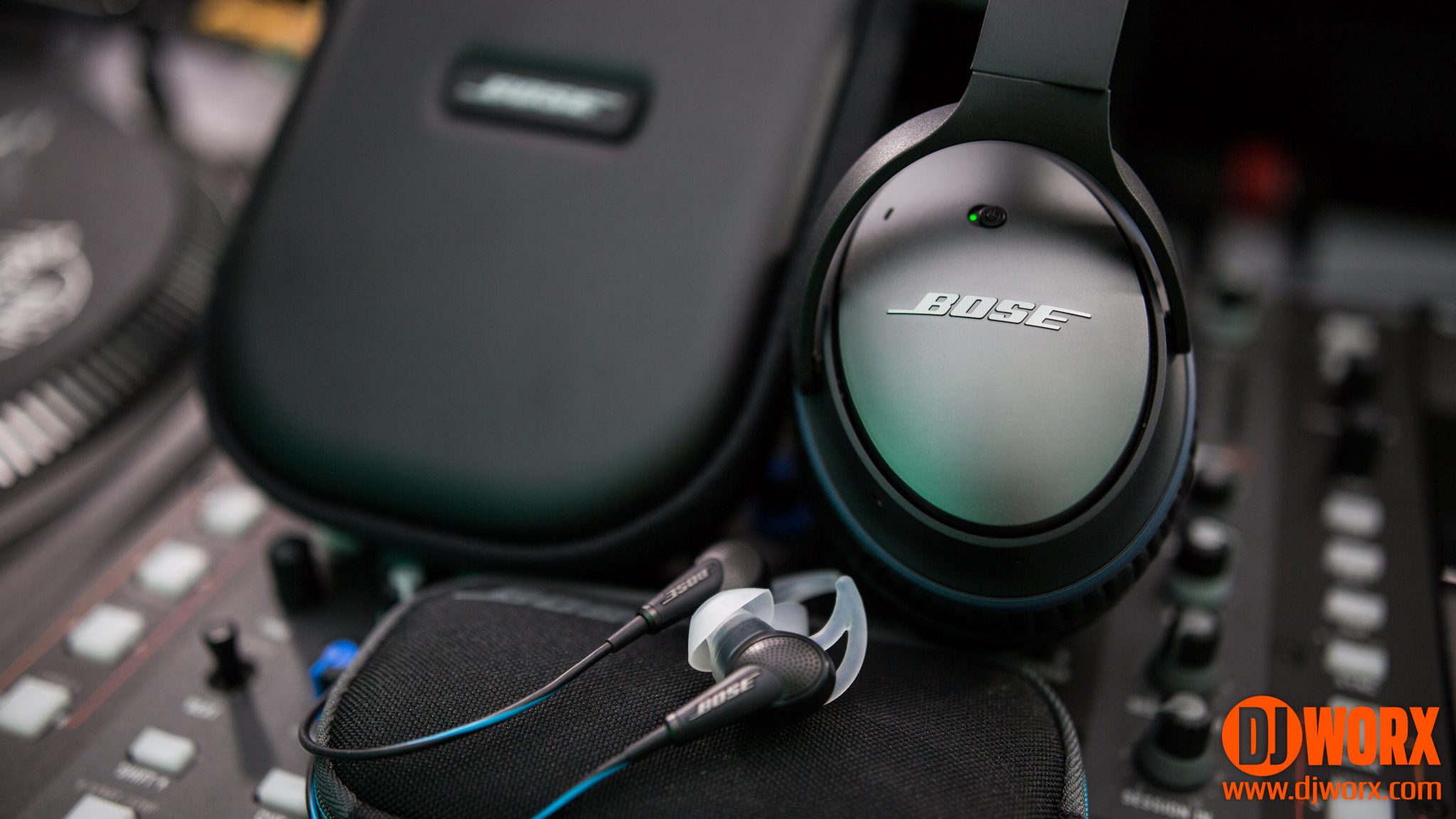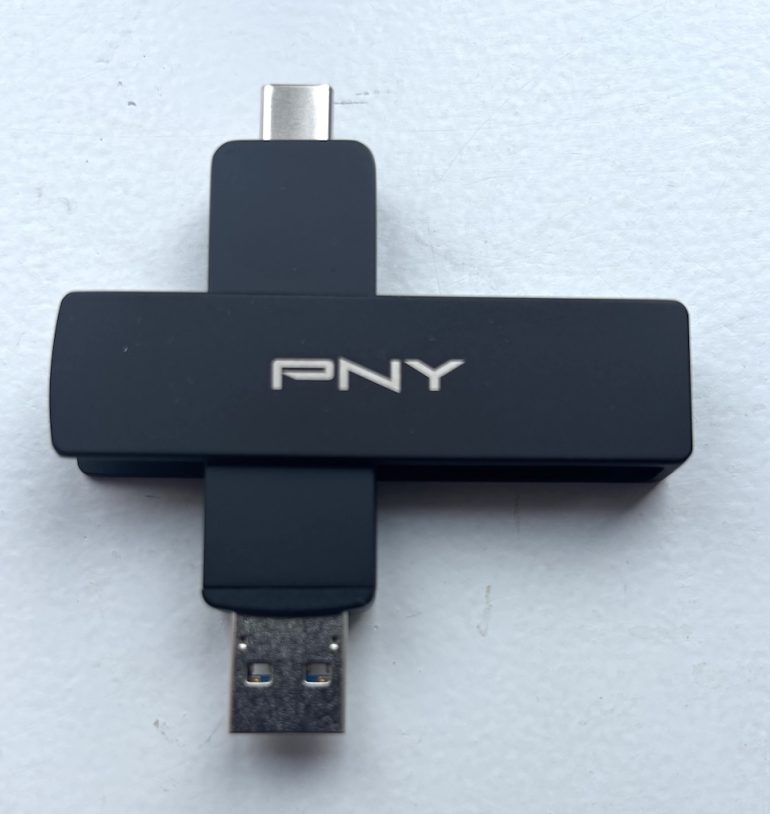LINK: QC20 | Price: $249/€200/£249 | Manual: PDF
LINK: QC25 | Price: $299/€269/£269 | Manual: PDF
INTRODUCTION
Being who we are and doing what we do means we spend a majority of our lives not just playing music, but primarily consuming it. After all, aside from listening like everybody else does, we also spend a lot of time figuring out what deserves to be played out and what doesn’t, followed by the routine grind of setting beat grids and cue points – and creating playlists, which we often do en route to a gig.
I think I’m not just speaking for myself here when I say that we also listen at louder volumes than the average person. We’re used to it so much that we often aren’t even aware of how hard we blast our ears on a regular basis. I’ve had a couple of situations where people I handed my headphones to visibly recoiled and asked me to turn it down. A Sennheiser HD25 is still pretty damn loud when hooked up to an iPod – but sometimes that’s the only way to suppress outside noise.
There are many reasons why DJ cans aren’t usually the best choice for regular, on-the-go listening. In most cases, it’s the cables and the overall bulkiness. Don’t get me wrong – I love my HD25 and my NS900. But wearing either of these now, in summertime? That’s a sweaty mess, so: no thanks. On-ear and over-ear headphones are a fall/winter thing for me.
For that reason, I’ve gone with in-ear models for a very long time. They’re lightweight and deliver pretty solid quality, unless you go for the bottom-shelf models which all consistently suck. The last pair I used was the Sennheiser CX-400II, and it survived a solid 7 years before the cable finally gave out. The thing with these is, they require a lot of maintenance – if you think about it, sticking a rubber cone into your ear canal isn’t exactly hygienic, especially if your method of storage is a tangled mess in your pocket. We’ve all been there, I’m no saint myself. But it’s still kind of disgusting. So I’ve spent a lot of time disinfecting the rubber parts, just like I do with my Elacin filters.
With the Sennheiser CX-400II dead and (sadly) not in production anymore, I started looking for a quality replacement. Several friends mentioned that I should try the noise-cancelling Bose models – so I did, picking up both the circumaural QC25 as well as the QC20 earbuds. After a few weeks of daily use, I decided to write about them.

THE THING WITH HEADPHONES
Every time any member of our team reviews headphones, we start with the same opening line: describing how a pair of monitors sounds is impossible, as all we can give you is our individual impression – for that reason, you should always double-check yourself if you have the chance.
In that regard, what I liked about the Bose salon I went to is that they let me test the QC20 earbuds, as they had spare silicone caps ready just for that purpose. In most cases, when buying in-ears, you’re playing a game of chance based on the specs on the package (which Bose curiously doesn’t provide) and maybe a review in a consumer mag – running the risk of dishing out on a pair you simply may not like, and not being able to return it for obvious reasons of hygiene.
Given the price tag on these, I’d say above-average consumer experience can be expected, but I was still pleasantly surprised. Of course, with the over-ear QC25, testing was no problem.

IN THE BOX
The QC20 comes with three sizes of silicone plugs which should make a nice fit for most people. They’re quite unobtrusive, despite being held in place very well. As earbuds, they also don’t fully enter your ear canal – they just sort of sit on top of it, which is (literally) a clean solution. The QC20 has an integrated battery for the noise cancelling system attached to the cable (with a microUSB charging port).
With the QC25, the system is embedded in the ear cups, and powered by a single AAA battery – also included in the box, along with an airline adapter. Both the QC20 and the QC25 come with stylish and sturdy carrying cases. One small detail I really like is that both 3.5mm plugs are angled. Why this hasn’t become an industry standard yet it a complete mystery to me. Both cables also come with remotes and microphones for controlling music playback and answering calls – something I’ll come back to later.
WHAT YOU HEAR
Bose is a high-end consumer brand, so the quality of these products is no joke. In the simplest of words, you get impressive overall clarity without the over-exposed low-end often found even with expensive headphones (*cough* Beats). I like both the QC20 and the QC25 in that regard, and there isn’t a lot I can say except that they’re each well worth a try.
Of course, you have to keep in mind that these are consumer products – not professional monitors. They’re made for casual listening, not perfect linear reproduction – but within that classification, they sound really pleasant to my ears. However, what I’d like to focus the review on is the active noise cancelling system, and its effect on the overall listening experience.
As I’ve said before, we DJs often listen to music at too high a volume. Call it whatever you want – force of habit, occupational disease, I don’t know. But I’m guilty of that, and I’m pretty sure a lot of you guys are as well. No matter how well your headphones isolate – when you’re out and about, some noise is going to get through, and you’re going to crank the volume to drown it out and fully immerse yourself in the music… it turns out there are healthier ways of going about that.
WHAT YOU DON’T HEAR
By now, noise-cancelling headphones aren’t anything spectacularly new. However, Bose is the company that originated the idea – as far back as the late 1970s, in fact. How does this system work? The principle is simple to grasp. The headphones are equipped with microphones which capture ambient noise, and immediately play it back phase-inverted – thus eliminating most of the outside world you’d hear very effectively. This is similar to how you can get a useable acapella out of a track if you have both the original and the instrumental – just layer them over another with maximum precision, phase-flip one of them, and presto – there’s your vocal track with some barely audible artefacts.
The noise-cancelling effect is best noticeable when flying. Nobody likes the constant droning of the ambient engine hum, and those headphones kill it off almost completely. Even with no music playing, you can just enjoy some relative peace & quiet. To be honest, when I activated the noise-cancelling system for the first time, I just stood there for a while with my jaw dropped – it’s quite amazing. On the QC20, one charge will last you around 12 hours – that’s a whole flight from Paris to LA. With the QC25, it depends entirely on the AAA battery you use, but you can always pack spares.
The good thing about such a powerful reduction of ambient noise is that you can follow suit by reducing your playback volume significantly, sacrificing nothing in terms of immersive listening pleasure. This is what really appeals to me – after all, our ears are an important asset to say the least, so we should take care and protect them. This is one very effective method of doing so, and I can only encourage you to try it – it’s an eye (or should I say ear? #DadPuns) opener. One thing that needs to be mentioned is that disabling the noise cancelling system has a tremendous negative impact on sound quality – but they’re obviously not intended to be used without it on.

DIFFERENCES
Aside from the form factor, there are several minor differences between the QC20 and the QC25. My impression is that the low end on the QC20 has a little more presence, although that may be a very individual perception based on the shape of my ears – but the QC25, being circumaural, isolates a noticeable bit better than the QC20. However, the QC20 has one useful feature missing from the QC25: it has an additional button on the remote that reduces the intensity of noise reduction slightly, so you can still hear your surroundings. This “aware mode” is useful for many reasons – not wanting to miss an announcement at an airport, talking to someone without taking out the earbuds, or added safety when you do something dangerously stupid like riding a bike while listening to music (seriously: don’t).
The main difference between the QC20 and QC25 is that the QC20 is pretty much an integrated all-in-one device – all you can swap out, if necessary, are the silicone earbuds. With the QC25, the cable is detachable and can be swapped out easily – although I don’t like that the ear cup port isn’t a standard 3.5mm one. If you want a spare, it’s going to have to be a Bose spare.
ROOM FOR IMPROVEMENT
As I said before, both units come with remotes attached to the cables – and those are specific to your mobile OS. So when buying, you’ll have to choose between iOS and Android. If your cable doesn’t match your device, you’re still going to be able to start and pause playback, as well as answer calls – it’s the volume/playlist controls that don’t work.
Of course, it’s not Bose’s fault that there are different standards for these systems (which is just stupid) – but I can’t help but wonder if it would be that much trouble to simply include cables with remotes for both systems in the package, like NOCS did with the NS900. It is a premium product, after all. With the QC20 being a one-piece unit, it’s not that easy – but I imagine a dip switch on the noise cancelling box could take care of that. Or, you know, use the microUSB port not just for charging, but also to change the setting from your computer. Seems more complicated than a dip switch, but it’s a possibility.
CAN YOU DJ WITH EITHER OF THESE?
One would assume it’s not that far-fetched an idea – noise cancellation could protect you from blaring monitors to some degree, for sure. But I wouldn’t DJ with earbuds except in an emergency, so the QC20 is a clear “no” right off the bat.
The QC25 on the other hand could be used like that, but there is a difference between a consumer product – however high-end – and a pro one. While all Bose gear I’ve seen so far is definitely very well-built, it also definitely wasn’t designed with stage performers in mind – I don’t think they’d survive a DJ’s level of abuse for very long. I guess if you’re playing a calm background music type set, they’ll do as a backup solution, but that’s it.
Where they excel beyond any a doubt is when you’re sitting on a plane or train and working on playlists – listening at a reasonably low volume means your ears don’t get too tired, and that’s a big deal when you’ve got a long night ahead of you. That being said, it could be interesting to see Bose come out with a sturdier pro model – why not? If you look at their growing line-up of PA systems, we can’t rule out they’ll enter the DJ market at some point in the future.

VERDICT
To sum up everything I’ve said – both the QC20 and QC25 are great for everyday listening, and the noise cancellation makes it easy to maintain healthy volume levels while doing so. If you like to pump club material at peak volume, however, they’re probably not for you. They’re also not cheap – but few good things ever are. I can’t give you a clear preference between the earbuds and headphones, because I like both. In any case, if you’re looking for a new set of pure listening cans, you should check them both out.



Thanks for the review. Does Bose mention a value in -dB for their noise reduction system? I’m using my Shure SE215 for listening to music in loud(ish) areas and they – as far as Shure advertises – reduce noise up to 37 dB. Are the QC20 significantly better?
I haven’t tried the SE215, so it’s hard to answer this one. When it comes to numbers (like I said in the review), Bose doesn’t boast any detailed specs on their site, or inside the manual. I think this is due to the fact that with ear buds, a lot depends on your anatomy – and generally, it’s hard for a manufacturer to say “reduces noise by X db” because it depends on the nature of the noise. Also, kind of it’s apples and oranges, because the SE215 is a pair of passive plugs that block sound physically, while the QCs have a powered system built in.
What I can tell you is that the NR is most noticeable on the low end (rumbling traffic, public transportation etc.) – turning it on for the first time is almost like the feeling you get when a plane takes off and you fail to equalize, except without your hearing being affected otherwise. It’s like a strong low cut with volume reduction above the cutoff point. Wearing them while walking through the noisy inner city, my experience is that at moderate volume levels, you hear virtually nothing of the outside – but you really should try it yourself. I’ve seen the over-ear QC25 on display in several consumer electronics stores, so it shouldn’t be a problem.
I haven’t tried these specific Bose models, but I have experienced this with other Bose noise canceling headphones:
> turning it on for the first time is almost like the feeling you get when
a plane takes off and you fail to equalize, except without your hearing
being affected otherwise.
I find that sensation unpleasant and it does not go away. If I wear the headphones for a while, I get a headache (from the noise cancellation, not the headphones clamping my head or anything like that). No one knows why some people get a headache from active noise canceling headphones, but it happens.
I was underwhelmed by the sound quality of the headphones. But that wasn’t with the specific model reviewed in this article so it could be different on those.
Personally I find the sound isolation with Sennheiser HD-25s to be plenty for wearing in noisy places like trains, buses, and DJ booths and their sound quality is much better. On an airplane, HD-25s don’t totally block out the engine noise, so maybe Bose active noise canceling headphones would work better in that situation. Bose sells a lot of their noise canceling headphones in airports, so it would make sense if they specifically engineered the noise cancellation to work well on airplanes.
I ended up purchasing the QC25 and I’m sadisfied most of the time. Great for relaxing my ears in a club after a DJ-set. But still not perfect, especially at sudden changes of volume. They sort of “pop” quite annoyingly, e.g. when sitting in a train and another train passes in the opposite direction at high speed. But still great, I’m even wearing them without listening to music. Just to block out the noise. Hopefully the won’t fall apart after a few month of regular useage.
I picked up a pair of the QC25’s when flying out to Hong Kong from Dixon’s in the Airport and found a huge price difference between the Apple/Android versions.
The Android (it said “Made for Samsung” on the box but was a “normal” phone plug configuration) was £220 but the iPhone version was £270… a £50 difference for a cable!
I agree with everything here. I use the Senheiser HD25’s daily at work but the QC25’s was one of the best buys I’ve ever made for travelling. I was also left open-mouthed when I first switched them on during a 13 hour flight and literally just had nothing plaything through them for half of the journey! I just used them to relax!
I got a deal at the airport as I also picked up a Samsung Gear 360 camera so he did me the QC25’s at £200.
For a regular traveller these are worth every penny.